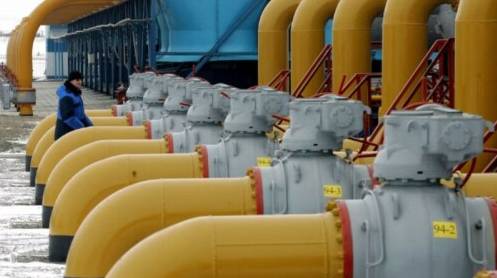Nearly five years ago while in Kolkata, I interviewed Sanjay Kar Chowdury, a manager at the Calcutta Electric Supply Corporation. When I asked him about the importance of coal to the Indian electric grid, he did not hesitate. Coal, he told me, “is a lifeline. It is a lifeline of all the thermal power stations. Without coal, you cannot survive…It’s not possible to keep the lights on without coal.”
Chowdury’s words are as true for India today as they were back in December 2016. India, with a population of nearly 1.4 billion people, is in the throes of an energy crisis that could result in rolling blackouts that last for months. Coal-fired power plants produced about 70% of the country’s electricity. But according to news reports, more than half of the country’s coal plants are expected to run out of fuel in the next day or two.
The coal shortage in India is happening at the same time global coal prices are setting new records, with the benchmark Australian thermal coal selling for about $200 per ton. The surge in demand for coal in India reflects the surging demand for electricity. According to the BBC, electricity demand in the country over the past two months has soared by about 17% compared to 2019.
PROMOTED
As I wrote in these pages back in August, as the Covid lockdowns have eased, global power demand has soared, jumping by about 5% in the first half of the year, which is faster than the growth recorded in 2018, when global electricity use was increasing by about 4% per annum. The surge in electricity demand, combined with widespread wind droughts in Europe, has sharply increased demand for natural gas to generate power. It has also led to soaring prices for oil and LNG around the world.
The spiking price of power in Europe, India, and China, is having knock-on effects around the world and stoking fears of a major financial correction or global recession as factories lay off workers due to shortages of electricity. Soaring electricity demand is also leading to a surge in oil demand for power generation. On Monday, Damien Courvalin, the head of energy research at Goldman Sachs Group GS +0.6%, said that global oil demand will increase by an extra 650,000 barrels per day as utilities switch some of their power plants from natural gas to oil. Other analysts, including Rystad Energy, are predicting that the global demand for oil in the power sector could reach 1 million barrels of petroleum per day. That number could easily double or triple if Europe has a cold winter or wind droughts continue.
MORE FOR YOU
Here’s The List Of 317 Wind Energy Rejections The Sierra Club Doesn’t Want You To See
Revisiting The Blame For High Gas Prices
Why Do ‘Fracking’ Opponents Ignore Its Moral Benefits?
This surge in demand for hydrocarbons to produce electricity proves once again, that electricity is the world’s most important and fastest-growing form of energy. It also proves what I call the Iron Law of Electricity, which says “People, businesses, and countries will do whatever they have to do to get the electricity they need,” I’ve also stated it as “when forced to choose between dirty electricity and no electricity, people will choose dirty electricity every time.” (The Iron Law of Electricity, of course, owes its heritage to Roger Pielke Jr.’s Iron Law of Climate, which I have written about many times, including in these pages on August 30.)
Both versions of the Iron Law of Electricity are true. Over the past five years, I have seen the Iron Law at work with my own eyes. I’ve watched as people steal electricity (in India), pay the “generator mafia” (Lebanon) and run their own small generators (Puerto Rico and Louisiana) to make sure they have the electricity they need to refrigerate their food, cook their dinner, and heat (or cool) their homes.
The Iron Law of Electricity can be seen in this headline in Bloomberg last month, “Starved of Gas, European Electricity Producers Snap Up Coal.” The article said that electricity generators on the continent are “snapping up coal cargoes as a shortage of natural gas forces utilities to burn the dirtiest of fossil fuels.” Other examples of the Iron Law of Electricity are easy to find. Last year, China added about 30 gigawatts of new coal-fired capacity. That new capacity more than offset the 17 gigawatts of coal-fired generation capacity that was retired in the rest of the world last year. Furthermore, China has nearly 250 gigawatts of new coal-fired capacity under development.
There’s no small bit of irony that the Iron Law of Electricity is being spotlighted in advance of the COP 26 climate conference in Glasgow, Scotland, which begins on October 31. Last month, United Nations Secretary-General António Guterres said there is a “high risk of failure” to reach a new climate accord unless politicians agree to slash their respective countries’ emissions. Guterres’ remarks came just a few days after the United Nations issued a report which found that global greenhouse gas emissions are likely to increase by 16% by 2030 compared to 2010 levels.
A key reason, of course, for the ongoing increase in greenhouse gases is the surge in emissions from the electricity sector, which is the largest emitter of carbon dioxide emissions.
The bottom line here is obvious: the surge in global electricity demand can only be met in the near term, meaning the next decade or so, by burning more coal, oil, and natural gas. Renewables cannot, will not, be able to scale up to meet that growing demand. The other bottom line is equally obvious, and it’s a point that I, and many others, have been making for more than a decade: if the countries of the world are serious about reducing greenhouse gas emissions and providing more electricity to the billions of people now living in energy poverty, the only way to do it is with nuclear energy and lots of it.





